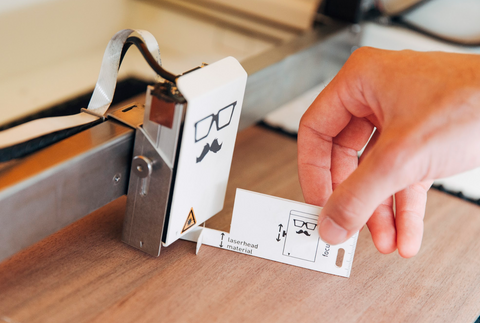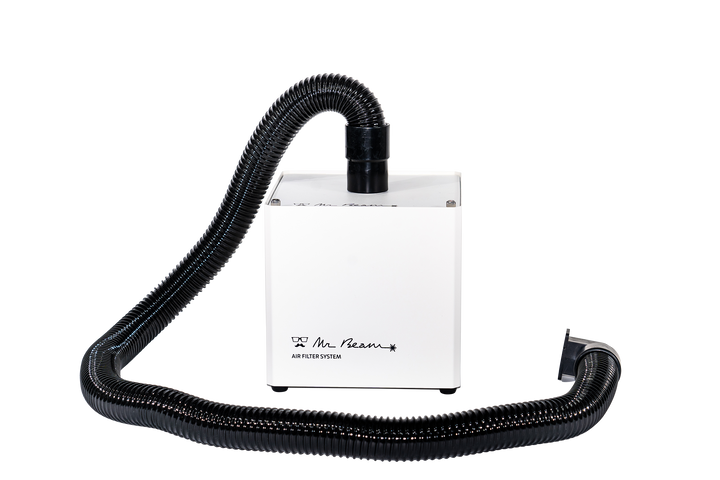CNC milling is a widely used technology that allows you to machine workpieces using computer numerical control. The use of a CNC milling machine is associated with some follow-up costs and is very maintenance-intensive. A worthwhile alternative is laser cutting . The production variant with a laser cutter enables you to achieve maximum precision with low maintenance costs at the same time.
What is CNC milling? Technology at a glance
As an acronym , CNC stands for Computerized Numerical Control . The milling machine is controlled using a computer-controlled numerical procedure. This allows different workpieces made of different materials to be machined. In terms of the basic principle, it is a machining process of production. Thanks to the use of CNC machine tools, the machining process is automated. Modern control technology enables a high degree of precision.
Today, the CNC milling machine is primarily used in metalworking production . Other areas of application extend to the processing of wood and plastic. CNC milling enables the cost-effective production of various workpieces. Thanks to the precision, the process also enables a certain complexity in production. Modern CNC milling machines can achieve enormous cutting speeds of up to around 10,000 revolutions per minute. Especially with large series production, this enables an economical form of production.

However, the technology of CNC milling has the fundamental disadvantage of causing high maintenance costs. The maintenance intensity is primarily due to the fact that new tools have to be procured regularly when milling. The processing of materials by milling leads to wear of the CNC milling machine. In contrast, there are no significant maintenance costs with laser technology . This gives you full cost control, which means that the investment in laser technology quickly pays for itself.
How does the CNC milling machine work? procedure and process
As a machining manufacturing process, CNC milling enables the production of certain workpieces with a previously defined geometric structure or shape. A CNC milling machine is used, which continuously removes material from the raw piece until the desired shape is achieved. The tiller rotates around its own axis at high speed. Meanwhile, the chip is removed, with the workpiece or tool being moved accordingly so that the desired contour is achieved.
The CNC milling machine is based on computerized numerical control technology. The required shape or contour of the workpiece is designed in advance using a CAD program . This is followed by transfer to CNC software. In this step, a whole series of criteria and parameters must be taken into account. This includes factors such as the speed, the cutting depth or the feed. Typically, current CNC milling machines are equipped with up to six axes for machining. Three axes act as main axes, while the other three axes are to be understood as auxiliary axes.
CNC milling machine and its variants
With the CNC milling machine, it is important to differentiate between the milling variants of down-cut milling and up-cut milling. Up-cut milling is characterized by the fact that the milling cutter rotates against the feed direction of the workpiece. During the cutting process, a chip is created that thickens. The consequence of this is that the required effort increases continuously when the milling cutter first enters until it exits. This creates a lot of pressure. This is also noticeable in the wear of the cutting edge. For this reason, up-cut milling is used particularly in the processing of workpieces with particularly hard edge zones.
Climb milling is characterized in that the cutting edge performs a rotating movement in the feed direction of the workpiece. With this procedure, the effort required is greatest when the cutting edge enters and decreases as it exits. The process of climb milling is used in particular in connection with the production of very smooth surfaces. Climb milling is therefore the first choice when there are high demands on the surface quality.
Another distinguishing feature of the CNC milling machine is the tool geometry. In this context, numerous different manufacturing processes can be identified and distinguished. These include CNC face milling, CNC hobbing and CNC profile milling. Other variants include CNC screw milling, CNC form milling and CNC plunge milling. What these CNC machining processes have in common is the possibility of automated and predominantly reproducible production of complex geometric shapes from different materials.
CNC router and materials
When processing with the CNC milling machine, several materials and materials are possible. The only requirement is that the material must be machinable. Classic materials in metal processing are steel and aluminum alloys. But plastics and wood are also possible. The most common and important materials that can be machined with a CNC router include

- steel and steel alloys
- cast steel
- aluminum
- cast aluminum
- gold
- Silver
- Brass
- Bronze
- titanium
- plastics
- woods
CNC milling machines
Certain machines are used for CNC milling. CNC machining centers are able to control the entire manufacturing and machining process. This happens automatically and independently and does not require any personnel. The process includes the steps from the first clamping of a workpiece through the milling process itself to post-processing. The CNC machining center can also take over any tool changes, the continuous provision of cooling lubricants and quality control. CNC machining centers today are mostly characterized by a modular structure. As a result, they can be fully adapted to the individual requirements of the respective customer.
In addition to the three main axes, current CNC machines generally work with three additional auxiliary axes. This enables the production of complex geometries and also meets high demands on shape and dimensional accuracy.
Laser cutting: the better alternative to the CNC milling machine
The biggest disadvantage of the CNC milling machine is its wear and tear and the associated maintenance intensity. Milling depends on the regular acquisition of new tools. This is where high costs and follow-up costs arise. Maintenance usually has to be carried out by qualified service technicians in order to avoid production downtime. There is a constant risk of machine failure due to defective parts and wearing parts. In addition, CNC systems are very complex in terms of technology and structure. Therefore, the consultation of expensive, external service providers is required for repair and maintenance.
Lower maintenance and follow-up costs of laser cutting
The laser cutting process requires almost no maintenance costs. The laser cutter works with a laser diode, which is not worn out so much during material processing. The Mr Beam's laser diode lasts about 10,000 laser hours without loss of performance. After that, the performance of the laser decreases somewhat and we recommend a new laser head. Compared to the CNC milling machine, this requires significantly less maintenance.

Flexibility and shorter set-up times
Another advantage is the greater flexibility of laser cutting compared to CNC milling. With laser cutting , materials can be changed much more quickly . This also has a positive effect on reducing set-up times and set-up costs. The laser cutter also enables the processing of thinner materials. You can use a laser to cut materials from a thickness of 0.5 millimeters. Furthermore, a more efficient use of the raw material is possible compared to a milling machine. The materials can be used more economically, which means that rejects can be avoided. With laser cutting, it is basically possible to produce a larger number of workpieces in a shorter time.
Precision and efficiency
Compared to the CNC milling machine, laser cutting also has the advantage of even more precise processing of the edges of the workpieces. Even the smallest cuts and processing can be done quickly and easily with a laser cutter. Furthermore, with the precise laser, there is usually no need for post-processing. CNC milling often requires subsequent processing (e.g. mechanical polishing) of the milling edges. Since this is done automatically with laser cutting, this work step can be saved here.
The implementation of precise and high-quality engravings in a matter of seconds makes the laser cutter a very efficient technology . Even if there are a large number of workpieces to be processed, production is more efficient than with CNC milling.
Low volume and cleanliness
Laser cutting with the Mr Beam is an extremely quiet technology because of the air filter system. The noise level during processing is low. Depending on the model, the motors of the CNC milling machines can get quite loud.
Furthermore, a laser cutter works very cleanly. Unlike CNC milling, laser cutting does not produce chips. This keeps the workplace hygienic and clean. Your employees are spared a cutting activity, since the material is vaporized quickly and explosively when working with the laser cutter.
Easy to integrate into existing processes
Laser cutting is a procedure that can be easily and quickly integrated into existing work processes. Corresponding files can be generated as usual in the traditional graphics program, such as Adobe Illustrator . They can then simply be forwarded to the laser cutter via a laser command. Here, too, there is an advantage over the CNC milling machine. In the case of the latter, time-consuming programming of the details is often required before the commands can be forwarded. The BeamOS software even supports you with intuitive presets, making your laser job easier.
Non-contact processing: no holding device required
Unlike the CNC milling machine, no separate fixation is required for laser cutting. Milling relies on a holding device, such as a vacuum table. Laser cutting is a non-contact and force-free form of processing the material. Even with deep cuts, the material around the cut remains undamaged. There is no damage or warping of the material when a laser cutter is used.
What support does Mr Beam offer for laser cutting?
Mr Beam is a pioneer in desktop laser cutting in Europe. With the Mr Beam you will find a device that offers both the highest precision and takes all common safety aspects into account. Thanks to the in-house software BeamOS, intuitive operation is ensured, with which even beginners can control the device. The Mr Beam is operated via an application in the web browser. A complex software installation is therefore not necessary . The Mr Beam works with plug and play on different browsers and operating systems, from Windows to Mac to Linux. Thanks to the integrated WLAN, a quick connection is possible. Since this works without a separate internet, the Mr Beam II dreamcut [S] also excellent for use on the go, for example at markets or trade fairs.
The Mr Beam enables laser cutting and engraving in a non-contact way. A large number of different materials can be processed in this way. This includes things as diverse as plywood , cardboard, fabric, foam rubber, or paper.
 Overview of the materials to be processed:
Overview of the materials to be processed:
- Wood
- felt
- different plastics
- cork
- leather
- latex
- stone, such as concrete
- rubber stamp
- power complex
- Paper carton
- Dark anodized aluminum
- different textiles
You can get a better overview of which materials are particularly easy to cut or engrave in our support area .
The Mr Beam corresponds to laser class 1. This means you can use it without the need for a laser safety officer. Thanks to the Mr Beam Air Filter system, it can also be used indoors.
As a low-maintenance all-in-one solution, the Mr Beam laser machine does not require any accessories and can be put into operation immediately. Optional accessories and spare parts are available, such as replacement laser heads, air filters and transport cases.
Do you need more information about our desktop laser cutter? Then just contact us . Our team will be happy to help you at any time and answer all your questions.





